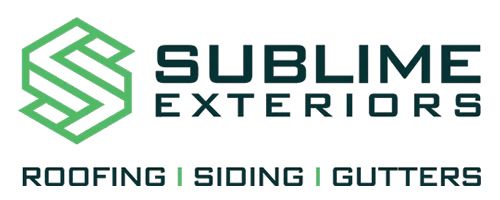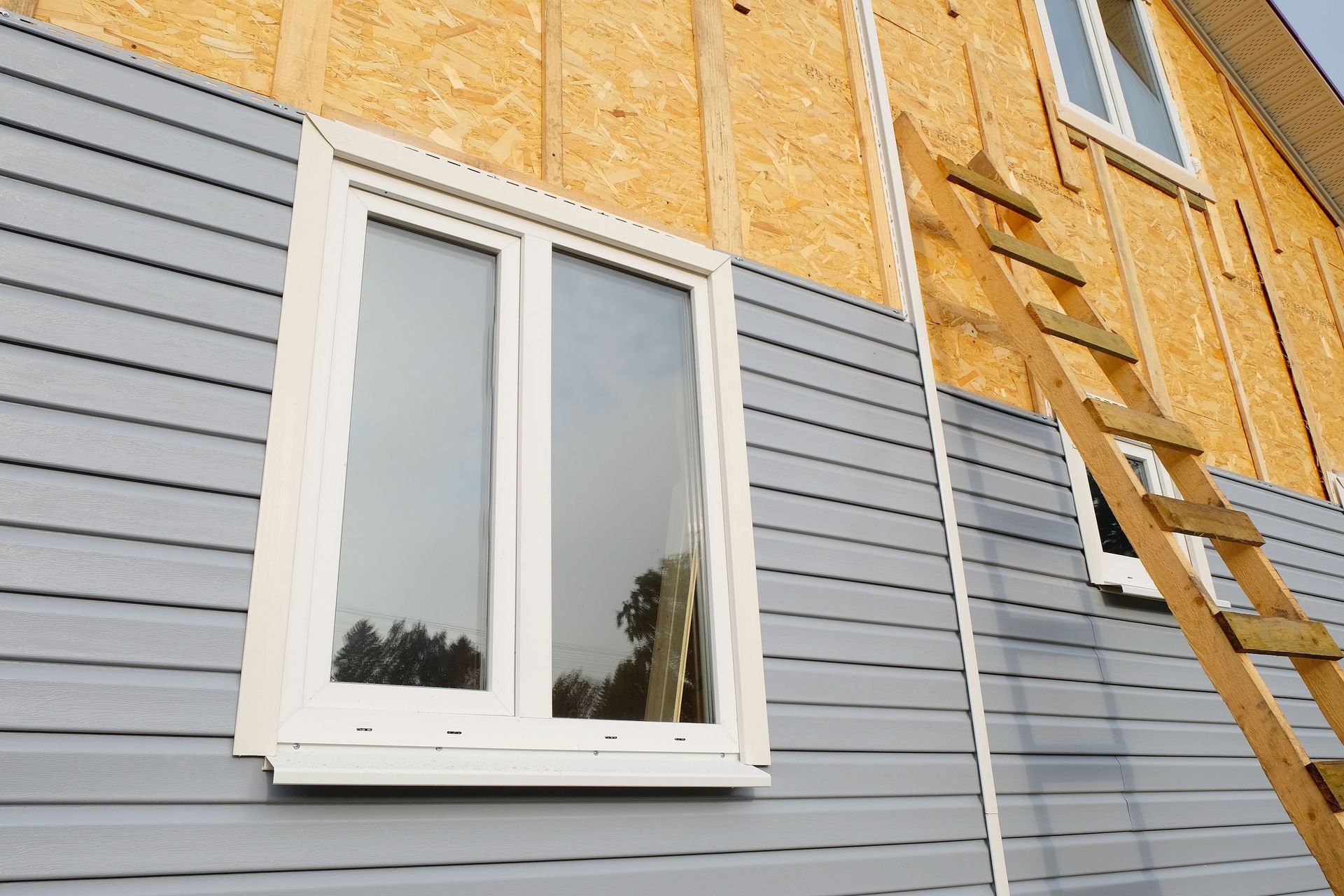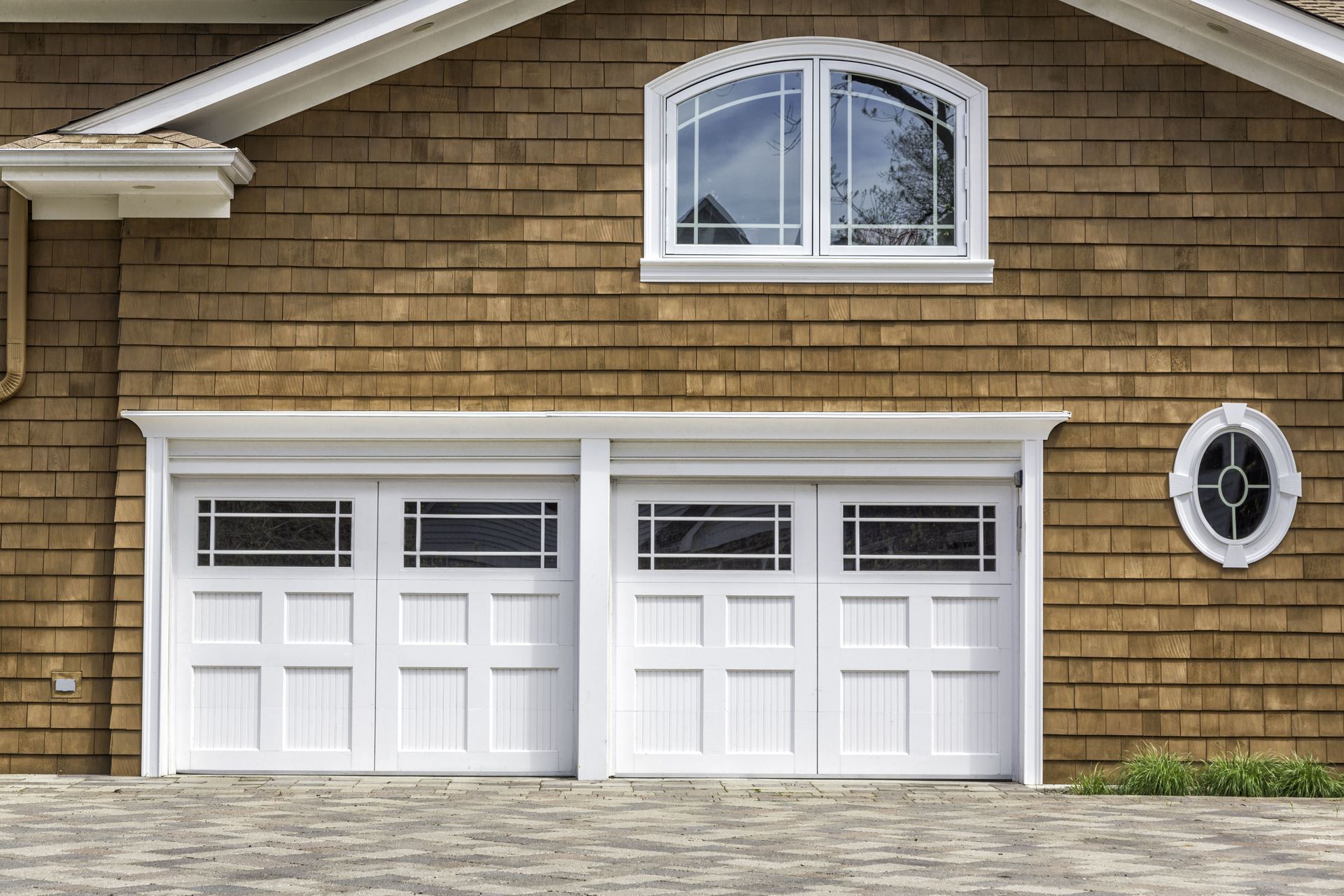August 21, 2025
Choosing the right siding for your home is a big decision that blends aesthetics, durability, and long-term value. Whether you're drawn to the refined look of fiber cement or the versatility of vinyl, knowing how each material performs can help you avoid costly regrets. The decision isn't just about looks but also how your siding installation will handle Ohio's weather, maintenance demands, and future resale value. This guide will break down the essential differences to move forward with clarity and confidence.
Compare Initial and Long-Term Costs
When planning a siding installation, cost is often the first consideration. Fiber cement typically costs more upfront than vinyl because it's heavier and requires skilled labor for precise handling. Vinyl, being lightweight, is faster and less expensive to install. However, the conversation doesn't stop at initial pricing. Over time, fiber cement may require repainting and sealing to maintain its protection, while vinyl generally needs only periodic cleaning. Depending on your home's needs and your willingness to handle future maintenance, the long-term expense gap may narrow.
Weigh Energy Efficiency Benefits
Energy efficiency is another critical factor in siding installation. Fiber cement naturally provides more insulation, helping keep heat inside during winter and cool air in during summer. Vinyl on its own is less insulating but can be paired with an insulated backing to achieve similar benefits. While the initial cost for insulated vinyl siding may be higher, it can pay off in lower utility bills over time. Homeowners should weigh these potential savings alongside their budget and comfort goals.
Factor in Resale Value
The siding you choose will impact how buyers perceive your home. Fiber cement often boosts resale value because of its upscale look and association with quality construction. Vinyl siding can still positively affect resale if it's in good condition and installed well, but it may not command the same premium. When resale is a priority, a higher-end siding installation may justify its cost by drawing more serious buyers and higher offers.
Evaluate Aesthetic Options
Both materials offer plenty of style choices, so your siding installation can match your design vision. Fiber cement is praised for mimicking natural wood, stone, or other premium finishes with exceptional realism. Vinyl has also made huge strides, with a wide range of colors, textures, and patterns that appeal to modern tastes. If you want your home to stand out, both options can be customized to fit your style, but fiber cement typically wins on authenticity.
Consider Color Longevity
Maintaining your home's curb appeal depends on how well your siding holds its color. Vinyl siding now features advanced coatings that resist fading, even under intense UV rays. Fiber cement can retain its color for many years but may require repainting in areas with intense sunlight. When deciding, factor in how much maintenance you're willing to do over the lifespan of your siding installation and review any color retention warranties offered.
Assess Durability Against the Elements
Fiber cement often shines in weather resistance, standing up to high winds, heavy rain, and temperature swings without warping. Vinyl performs well in most conditions but can crack or warp under extreme heat or impact. Ohio homeowners, in particular, should consider the freeze-thaw cycles and seasonal storms when selecting materials. The proper siding installation can prevent costly repairs and preserve your home's exterior for decades.
Look at Lifespan and Warranties
When you invest in a siding installation, you want to know how long it will last. According to The Spruce, vinyl siding generally has a lifespan of 30 to 40 years, but with regular maintenance, it can last over 60 years. Fiber cement offers a similar or slightly longer lifespan, especially when paired with manufacturer warranties that cover issues like fading, cracking, or structural defects. Reviewing warranty terms can give you extra peace of mind and a clear idea of long-term value.
Account for Fire Resistance and Safety
Fire safety may not be at the top of every homeowner's mind, but it's worth considering. Fiber cement is non-combustible and offers excellent fire resistance, while vinyl's performance can vary depending on treatments and additives. If your home is in an area where fire safety is a concern, factoring this into your siding installation decision could make a meaningful difference in protection.
Think About Environmental Impact
If sustainability is important to you, consider the environmental footprint of your siding installation. Fiber cement is made from materials like cement, sand, and cellulose fibers, offering durability that reduces replacement needs over time. Vinyl is made from PVC, which has historically been criticized for its manufacturing impact, though newer production methods have improved its environmental profile. Both materials have recycling potential, but fiber cement generally offers easier processing at the end of its life.
Plan for Installation Requirements
The complexity of the siding installation process shouldn't be overlooked. Fiber cement is heavier, requires more cutting precision, and should be installed by experienced professionals. Vinyl's lighter weight allows for faster installation, which can lower labor costs. Both still require professional handling to ensure proper alignment, moisture protection, and long-term performance. Preparing your home's exterior, making sure it's dry, structurally sound, and free of rot, will help the siding perform as expected.
Consider Retrofit Potential
If you're replacing old siding, vinyl can often be installed over existing materials, making it a simpler retrofit. Fiber cement may require removing older siding and checking structural supports, which can add to the project timeline and budget. For many homeowners, the retrofit process is a chance to address hidden damage and improve insulation—both of which can be factored into your siding installation decision.
Understand Market Trends and Preferences
Current market trends can also guide your choice. Fiber cement continues to gain popularity among homeowners who want a high-end look with lasting durability. Vinyl remains the more common choice due to its cost-effectiveness and style flexibility. When you choose a siding installation that aligns with current trends, you may see better returns when it's time to sell.
Listen to Expert and Homeowner Feedback
Contractors often recommend fiber cement for its resilience and premium finish, though they note its heavier labor requirements. Compared to earlier generations, vinyl earns praise for affordability, easy maintenance, and improved aesthetics. Homeowners with fiber cement frequently highlight its timeless look and ability to withstand harsh conditions. Vinyl owners appreciate its low upkeep and variety, but some report concerns about fading or warping over time. These insights can help you choose a siding installation that best fits your priorities.
Deciding between fiber cement and vinyl isn't a one-size-fits-all decision. It requires weighing cost, appearance, durability, environmental impact, and installation needs against your budget and long-term goals. The right choice will enhance your home's curb appeal, protect it from Ohio's varied weather, and serve you well for decades.
For homeowners in the Greater Columbus, OH area, Sublime Exteriors offers reliable
siding installation
services designed to meet your specific needs. Since 2020, we've specialized in siding, roofing, gutters, and Trusscore products, backed by a lifetime material warranty for your peace of mind. Whether you're drawn to the high-end look of fiber cement or the versatility of vinyl, our team ensures a professional installation that maximizes durability and curb appeal. Contact Sublime Exteriors today to schedule your consultation and start transforming your home's exterior.














